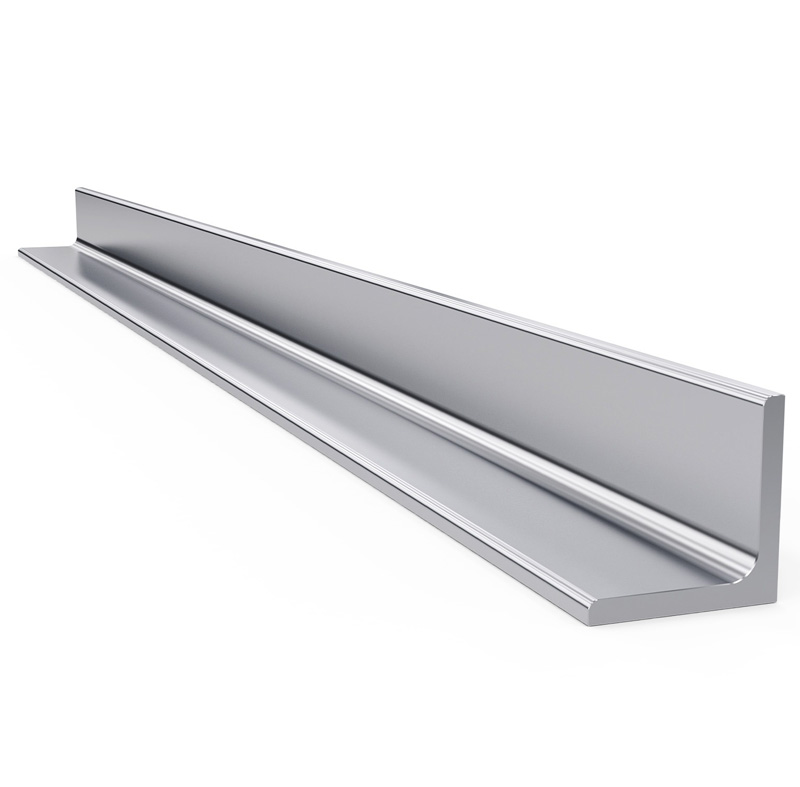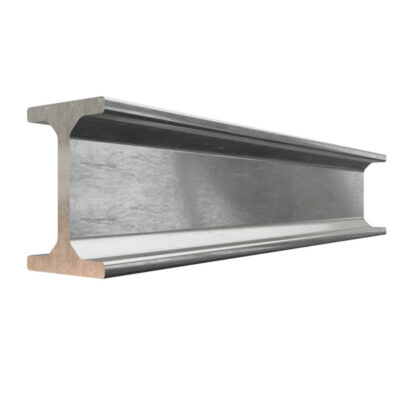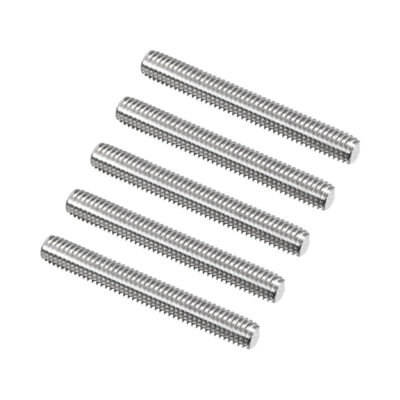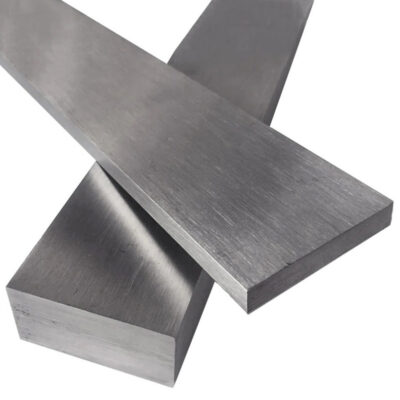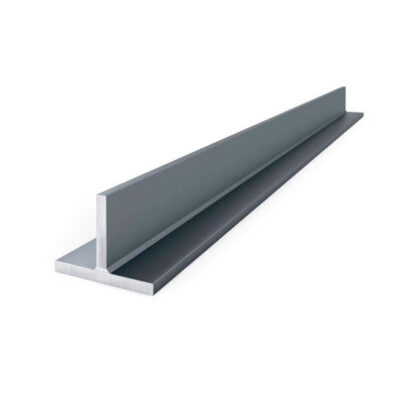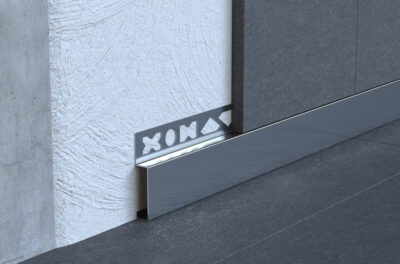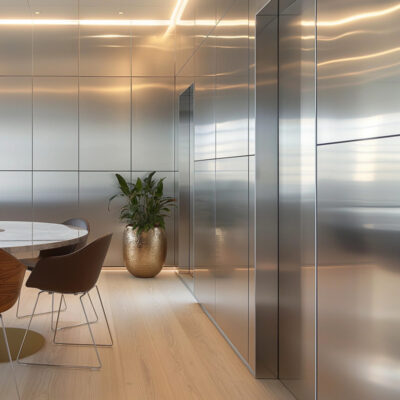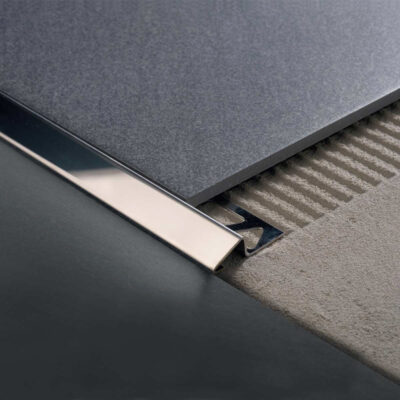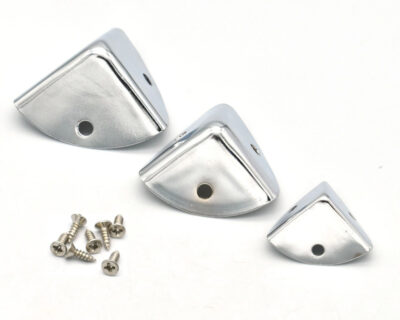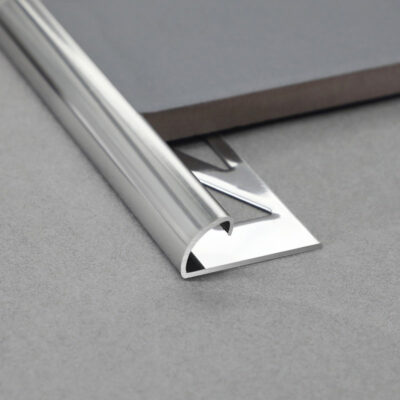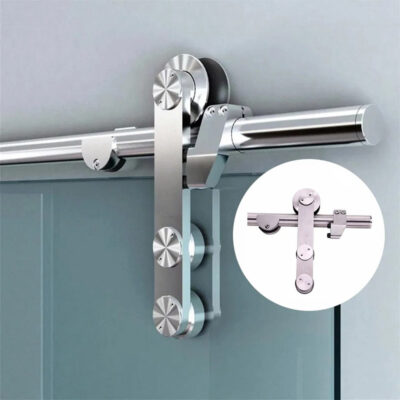Understanding Stainless Steel Angle Profiles: Beyond the Basics
The first time I encountered stainless steel angle profiles on a marine construction project, I was struck by their deceptive simplicity. These L-shaped structural elements were supporting critical components in a highly corrosive environment where ordinary steel would have failed within months. This experience fundamentally changed my understanding of how material selection impacts long-term engineering outcomes.
Stainless steel angle profiles represent one of the most versatile structural elements in modern construction and manufacturing. These L-shaped cross-section members consist of two legs joined at a 90-degree angle, creating a simple yet remarkably effective form that provides directional strength and rigidity. Unlike their carbon steel counterparts, stainless steel angles offer exceptional corrosion resistance, temperature tolerance, and aesthetic appeal—qualities that make them indispensable across numerous industries.
The production of these profiles typically involves hot rolling or extrusion processes, where stainless steel billets are transformed into the characteristic angular shape. Modern manufacturing techniques have evolved to create angles with extremely precise dimensions and consistent mechanical properties. Most commercially available E-Sang and other manufacturer profiles adhere to standardized dimensions, though custom specifications can be produced for specialized applications.
What distinguishes stainless steel angle profiles from ordinary steel variants is their metallurgical composition. The addition of chromium (minimum 10.5%) creates a self-healing passive oxide layer that shields the material from corrosive elements. Further alloying elements like nickel, molybdenum, and nitrogen enhance specific properties such as strength, ductility, and resistance to particular chemical environments.
The diversity of stainless steel angle profiles available today reflects their broad range of applications. While standard equal-leg angles remain common (where both sides of the “L” have identical dimensions), unequal-leg variants offer specialized mechanical advantages for certain load configurations. Sizes typically range from small 10x10mm profiles used in light fabrication to substantial 200x200mm angles employed in heavy structural applications.
Key Properties and Advantages of Stainless Steel Angle Profiles
During a recent facility expansion project, I faced a challenging decision between various structural materials for a food processing plant. The environment combined high humidity, frequent washing with caustic chemicals, and stringent sanitation requirements. The stainless steel angle profiles we ultimately selected have performed flawlessly for years, while saving considerable maintenance costs compared to alternatives we considered.
The structural performance of stainless steel angle profiles derives from their geometry combined with the inherent properties of the base material. The L-shape efficiently distributes loads and resists bending forces, particularly when positioned with the apex of the angle toward the anticipated stress. This configuration creates exceptional rigidity relative to material weight, making these profiles both strong and economical in many applications.
Corrosion resistance represents perhaps the most significant advantage of stainless steel angles. The chromium-rich passive layer continuously renews itself when damaged, providing long-term protection without additional treatments or coatings. This self-healing mechanism proves particularly valuable in:
- Maritime environments with salt spray exposure
- Chemical processing facilities handling corrosive substances
- Food and beverage production areas requiring sanitary surfaces
- Exterior architectural applications exposed to weather elements
- Underground and subsea installations
Temperature tolerance constitutes another remarkable property. Unlike many materials that degrade or lose strength at temperature extremes, stainless steel angle profiles maintain their structural integrity across a broad range. From cryogenic applications (reaching -196°C) to high-temperature environments exceeding 800°C (depending on the specific grade), these profiles deliver consistent performance where other materials would fail.
The sustainability aspects of stainless steel angles often go underappreciated. These profiles typically contain 60-80% recycled content, and at end-of-life, the material remains 100% recyclable without quality degradation. Their exceptional durability translates to reduced replacement frequency and associated environmental impacts. A life-cycle assessment conducted by the Nickel Institute found that stainless steel structures often outperform alternatives on environmental impact metrics when service life exceeds 20 years.
Perhaps counterintuitively, despite higher initial material costs, stainless steel angles frequently deliver superior lifetime value. Their minimal maintenance requirements, extended service life, and elimination of expensive protective coatings or treatments create compelling economic advantages in appropriate applications. I’ve consistently observed this in environments where corrosion, sanitation, or aesthetic considerations drive material selection.
Technical Specifications and Selection Criteria
Selecting the appropriate stainless steel angle profile involves navigating numerous technical considerations. During a consultation with Dr. Elena Kovalenko, a metallurgical specialist with 25 years of experience in structural applications, she emphasized that “the selection process must account for both mechanical requirements and environmental exposure conditions—overlooking either aspect can lead to premature failure or unnecessary expenses.”
Standard dimensions for stainless steel angle profiles typically follow established industry norms, though variations exist between manufacturers and regions. The following table outlines common specifications for equal-leg angles:
| Size Designation | Leg Width (mm) | Thickness (mm) | Weight (kg/m) | Section Properties | Typical Applications |
|---|---|---|---|---|---|
| 20×20 | 20 | 3-5 | 0.91-1.45 | Ix=Iy: 1.33-2.08 cm³ | Light fabrication, brackets, small fixtures |
| 40×40 | 40 | 4-6 | 2.41-3.52 | Ix=Iy: 5.63-8.19 cm³ | Medium-duty framing, equipment supports |
| 60×60 | 60 | 5-8 | 4.53-7.06 | Ix=Iy: 15.2-23.5 cm³ | Structural framing, staircase construction |
| 100×100 | 100 | 8-12 | 12.17-17.9 | Ix=Iy: 72.6-105.3 cm³ | Heavy-duty structural supports, large frames |
| 150×150 | 150 | 10-15 | 22.8-33.6 | Ix=Iy: 252.1-366.4 cm³ | Major load-bearing structures, foundations |
Note: Unequal angles follow similar patterns but with different sectional properties in each axis. Section properties listed are approximate and may vary by manufacturer and production method.
Material grade selection significantly impacts performance in specific environments. The austenitic 300-series stainless steels dominate angle profile applications, with grades 304/304L and 316/316L being most prevalent. Grade 304 offers excellent general corrosion resistance, while 316 adds molybdenum to enhance performance in chloride-rich environments like coastal areas and swimming pools.
When I evaluated options for a chemical processing plant project, our team discovered that standard 304 stainless would experience accelerated corrosion due to specific acid exposures. Consulting with the facility engineers led us to specify a higher-performance duplex grade (2205) that has performed exceptionally well despite the harsh conditions—a decision that prevented costly early replacement.
Surface finish options for stainless steel angle profiles range from standard mill finish to specialized treatments:
- Mill finish (2B/2D): Standard production finish with moderate reflectivity
- Brushed/satin finish (typically #4): Uniform appearance with reduced glare
- Mirror polished: Highly reflective for architectural or sanitary applications
- Matte/bead blasted: Non-reflective with excellent tactile properties
Load-bearing calculations for stainless steel angles must account for several factors:
- Sectional properties (area, moment of inertia)
- Material grade and associated mechanical properties
- Environmental conditions affecting strength
- Connection methods and support conditions
- Safety factors appropriate to the application
Standard compliance provides assurance of quality and performance. Key specifications include ASTM A276/A479 (general stainless requirements), ASTM A484 (general requirements for bars and shapes), and EN 10088-2 (European standard for stainless steel products).
Specialized Applications Across Industries
The versatility of stainless steel angle profiles becomes apparent when examining their diverse applications across industries. Last year, I toured a newly completed waterfront development incorporating extensive stainless steel structural elements. The architect explained that despite a 15% premium over weathering steel alternatives, the stainless option eliminated maintenance needs and preserved the clean aesthetic lines central to the design concept.
In architectural and construction contexts, stainless steel angles serve both structural and aesthetic functions. Their sleek appearance and ability to take various finishes make them ideal for exposed structural elements, curtain wall supports, and decorative features. The Helix Bridge in Singapore exemplifies this dual purpose, where stainless steel angles form both the primary structure and create a visually striking design element.
The marine and offshore sectors place extreme demands on materials due to constant salt exposure and challenging maintenance conditions. Stainless steel angle profiles—particularly in grades 316, 317, and duplex variants—provide critical structural support in environments where failure risks are unacceptable. Applications include:
- Deck supports and equipment mounting frameworks
- Bulkhead reinforcement and partition framing
- Railing systems and access platforms
- Machinery foundations in engine rooms
- Heat exchanger and piping supports
The food and pharmaceutical industries face stringent regulatory requirements for cleanliness and contamination prevention. During a consultation with Maria Chen, a process engineer specializing in FDA-compliant facilities, she noted: “The lack of crevices in properly fabricated stainless angle assemblies, combined with their resistance to cleaning agents, makes them ideal for supporting processing equipment where sanitation is paramount.”
These industries particularly value stainless steel angle profiles for:
- Supporting process equipment and piping
- Framework for clean rooms and controlled environments
- Wall and ceiling suspension systems
- Customized equipment skids and modules
- Laboratory furniture and testing apparatus
Chemical processing presents perhaps the most challenging environments for structural materials. The combination of corrosive substances, temperature fluctuations, and safety-critical operations demands materials with exceptional resilience. Specialized high-performance stainless steel grades such as 904L, 254SMO, and various duplex alloys frequently appear in angle profiles supporting critical infrastructure in these facilities.
Transportation and infrastructure applications benefit from the durability and minimal maintenance requirements of stainless steel angles. From railway infrastructure to bridge components and tunnel support systems, these profiles deliver decades of service with minimal intervention. A compelling case study exists in the Progreso Pier in Mexico, where stainless steel structural elements have endured over 80 years of harsh coastal exposure with minimal deterioration.
Installation and Fabrication Considerations
My first major project involving stainless steel angle profiles taught me valuable lessons about their unique fabrication requirements. Having previously worked primarily with carbon steel, I initially underestimated the differences in cutting and welding characteristics. After consulting with an experienced fabricator, we adjusted our processes to account for stainless steel’s work hardening properties and different thermal expansion rates.
Cutting stainless steel angle profiles requires specialized approaches compared to carbon steel alternatives. The material’s work hardening tendency necessitates sharp, properly maintained tools and appropriate cutting speeds. Common methods include:
- Abrasive cutting (using aluminum oxide or silicon carbide wheels)
- Band sawing with bi-metal blades designed for stainless
- Plasma cutting with parameters optimized for stainless alloys
- Laser cutting for precision applications
- Water jet cutting for heat-sensitive requirements
Joining stainless steel angles effectively demands attention to material-specific considerations. Welding represents the most common joining method, though mechanical fastening offers advantages in certain scenarios.
When welding stainless steel angles, key factors include:
- Selecting compatible filler metals (typically matching or exceeding the base metal’s alloying elements)
- Minimizing heat input to prevent distortion and preserve corrosion resistance
- Protecting the weld area with appropriate shielding gas (typically argon or argon-helium mixtures)
- Post-weld cleaning to restore passive layer integrity
- Using proper techniques to prevent sensitization (carbide precipitation)
For mechanical fastening, stainless steel fasteners matching or exceeding the angle profile’s grade should be used to prevent galvanic corrosion. Isolation techniques may be necessary when joining dissimilar metals.
Proper handling procedures protect both workers and materials. Stainless steel angle profiles should be:
- Stored separately from carbon steel to prevent cross-contamination
- Handled with clean gloves to avoid fingerprint etching
- Protected from iron particles generated by nearby grinding of carbon steel
- Cleaned after fabrication to remove any surface contaminants
The tools and equipment for stainless steel fabrication should be dedicated to prevent cross-contamination. I’ve observed numerous cases where corrosion issues stemmed from using the same grinding wheels or wire brushes on both carbon and stainless steels.
Thermal expansion considerations are particularly important with stainless steel angles. With expansion rates approximately 50% higher than carbon steel, designs must accommodate potential movement to prevent distortion or stress concentration. This becomes particularly critical in applications spanning significant temperature ranges or in structural connections between dissimilar materials.
Maintenance and Longevity Factors
The perception that stainless steel is maintenance-free represents a common misconception. While certainly low-maintenance compared to many alternatives, stainless steel angle profiles still benefit from appropriate care to maximize service life and preserve appearance. During a conversation with maintenance director Thomas Wilson, who oversees a coastal manufacturing facility, he remarked: “Our initial investment in proper cleaning protocols has paid dividends—structures we installed twelve years ago still look virtually new despite our aggressive marine environment.”
Cleaning recommendations vary by environment and surface finish:
- Regular dust removal using soft cloths or non-abrasive brushes prevents particle accumulation that can lead to surface corrosion
- Washing with mild soap and water removes most contaminants without damaging the passive layer
- Stubborn deposits may require specialized stainless steel cleaners containing no chlorides
- For decorative finishes, cleaning in the direction of the grain preserves appearance
- High-pressure washing works well for industrial applications but should avoid chlorinated water sources
Environmental exposure presents varying challenges depending on specific conditions. Coastal environments introduce chlorides that can penetrate the passive layer, while industrial areas may contain acidic pollutants. Periodic inspection for early signs of localized corrosion allows intervention before significant damage occurs.
The table below summarizes corrosion resistance characteristics in different environments:
| Environment Type | Grade 304 Performance | Grade 316 Performance | Recommended Maintenance Frequency | Notes |
|---|---|---|---|---|
| Indoor, clean | Excellent | Excellent | Annual inspection | Minimal intervention needed |
| Urban exterior | Very good | Excellent | Quarterly cleaning | Atmospheric pollutants may accumulate |
| Coastal (>1km from shore) | Good | Very good | Bi-monthly cleaning | Salt aerosols present moderate challenge |
| Coastal (direct spray zone) | Poor-Fair | Good | Monthly cleaning | Regular freshwater rinsing highly beneficial |
| Industrial (chemical) | Variable | Variable | Monthly inspection | Specific environmental assessment required |
| Food processing | Very good | Excellent | Daily/weekly cleaning | Sanitizing agents must be compatible |
Preventing galvanic corrosion requires attention to material combinations. When stainless steel angles contact dissimilar metals with different electrochemical potentials, corrosion can accelerate dramatically. Isolation strategies include:
- Insulating barriers (PTFE washers, non-conductive sleeves)
- Compatible fastener selection
- Protective coatings at contact points
- Design modifications to prevent water retention at joints
Lifespan expectations for stainless steel angle profiles vary dramatically based on material grade, environment, and maintenance practices. In controlled indoor environments, service life often exceeds 100 years with minimal intervention. Even in challenging outdoor settings, properly specified and maintained stainless angles typically provide 30-50 years of service before significant rehabilitation becomes necessary.
I witnessed this durability firsthand when documenting the renovation of a 1960s-era coastal structure. The original 316 stainless steel support angles remained structurally sound despite decades of salt spray exposure, requiring only surface cleaning to restore appearance. The surrounding carbon steel elements, despite multiple protective coating applications, had deteriorated beyond recovery.
Cost Considerations and Value Analysis
The initial price premium for stainless steel angle profiles often creates hesitation among project planners. During a recent industrial facility expansion, our team faced pushback from procurement when specifying stainless angles for a processing area. We developed a comprehensive cost analysis demonstrating that despite a 2.8x higher initial cost, the stainless option would break even in just 6.5 years when accounting for maintenance and replacement costs.
Initial investment comparisons show stainless steel angles typically costing 2-4 times more than equivalent carbon steel profiles. However, this simplistic comparison overlooks numerous factors affecting total ownership cost:
- Elimination or reduction of protective coating expenses
- Reduced inspection and maintenance requirements
- Extended service life and depreciation advantages
- Salvage value (stainless retains approximately 60-70% of initial value as scrap)
- Reduced downtime for maintenance or replacement
- Lower risk of contamination or production disruption
When comparing stainless steel angle profiles to alternative materials, several considerations emerge:
| Material | Initial Cost | Corrosion Resistance | Maintenance Requirements | Typical Lifespan | Environmental Impact | Appearance Retention |
|---|---|---|---|---|---|---|
| Carbon Steel | Low | Poor without protection | High – requires regular coating | 15-25 years with maintenance | Moderate – frequent recoating | Deteriorates rapidly |
| Galvanized Steel | Low-Moderate | Moderate | Medium – coating eventually fails | 20-40 years | Moderate – zinc runoff concerns | Dulls over time |
| Aluminum | Moderate | Good (except alkaline environments) | Low-Medium | 30-40 years | Low – highly recyclable | Good with anodizing |
| Stainless Steel | High | Excellent | Very Low | 50-100+ years | Low – extremely durable and recyclable | Excellent long-term |
| Fiber-Reinforced Polymers | High | Excellent | Very Low | 25-50 years | Moderate – disposal challenges | Variable (UV degradation) |
Cost-saving installation methods can partially offset higher material expenses. These include:
- Designing for standard sizes to minimize custom fabrication
- Utilizing mechanical fastening where appropriate to reduce welding costs
- Prefabrication to minimize field labor
- Specifying only the required grade (avoiding over-specification)
- Optimizing section sizes through precise engineering analysis
Life-cycle cost assessment represents the most accurate approach to evaluating stainless steel angle profiles. This methodology accounts for all costs throughout the expected service life, including:
- Initial material and fabrication expenses
- Installation costs
- Periodic maintenance requirements
- Production losses during maintenance
- Replacement costs at end-of-life
- Environmental compliance expenses
- Disposal or recycling value
When properly evaluated over extended timeframes (25+ years), stainless steel angles frequently emerge as the most economical option for demanding environments. I’ve documented several projects where initial resistance to higher material costs gave way to appreciation as maintenance savings materialized faster than anticipated.
Future Trends and Innovations in Stainless Steel Angles
The evolution of stainless steel angle profiles continues as manufacturing technologies advance and market demands evolve. During an industry conference last fall, I was intrigued by demonstrations of laser-fusion manufacturing techniques capable of producing complex angle configurations with internal reinforcement features—geometries impossible through traditional methods.
Advanced manufacturing technologies are reshaping production capabilities. Contemporary developments include:
- Precision laser cutting enabling complex notching and end preparations
- Improved rolling techniques for tighter dimensional tolerances
- Laser welding for cleaner, more controlled joining
- Additive manufacturing creating specialized junction components
- Computer-controlled bending for complex angle variations
New alloy developments expand application possibilities. Recent innovations include:
- High-nitrogen stainless steels offering enhanced strength without compromised corrosion resistance
- Precipitation-hardening grades combining excellent fabricability with exceptional mechanical properties
- Super-austenitic alloys for extreme chemical environments
- Lower-nickel alternatives providing cost stability against volatile nickel pricing
- Advanced duplex grades balancing strength and corrosion performance
Sustainability initiatives increasingly influence stainless steel production and specification. The industry has made significant strides in reducing environmental footprints through:
- Energy-efficient electric arc furnace production
- Increased use of renewable energy in manufacturing
- Water recycling systems minimizing consumption
- Advanced filtration reducing airborne emissions
- Improved scrap utilization techniques
Integration with digital design and Building Information Modeling (BIM) streamlines specification and installation of stainless steel angle profiles. Modern workflows incorporate:
- Parametric modeling of standard and custom angle configurations
- Structural analysis integration for optimized sizing
- Automated fabrication drawings generation
- Material tracking and lifecycle management
- Facilities management data integration
Research conducted at the University of Sheffield’s Advanced Metallurgy Center suggests emerging surface treatment technologies may further enhance stainless steel angle performance. Dr. James Harrington’s team has developed nano-structured surface modifications that dramatically improve biofouling resistance while maintaining mechanical properties—a development with significant implications for marine applications.
The market trajectory for stainless steel angle profiles appears robust, with predicted growth exceeding 5.8% annually through 2027. This expansion reflects both traditional applications and emerging fields such as renewable energy infrastructure, advanced transportation systems, and sustainable architecture. As environmental concerns and life-cycle thinking become increasingly central to material selection, stainless steel angles are well-positioned to meet evolving demands.
Concluding Perspectives on Stainless Steel Angle Profiles
Throughout my career working with various structural elements, I’ve developed a nuanced appreciation for stainless steel angle profiles that balances enthusiasm for their capabilities with realistic assessment of their limitations. Their combination of strength, durability, and minimal maintenance requirements creates compelling advantages in appropriate applications, while their higher initial cost necessitates thoughtful specification.
The selection of stainless steel angle profiles ultimately requires a multidimensional evaluation process weighing numerous factors:
- Environmental exposure conditions
- Required service life
- Aesthetic considerations
- Structural requirements
- Maintenance capabilities
- Budget constraints (both initial and long-term)
- Sustainability objectives
For environments presenting corrosion challenges, sanitary requirements, or aesthetic importance, stainless steel angles frequently represent the most cost-effective solution despite higher acquisition costs. Conversely, in protected environments with minimal corrosion risk and where appearance is secondary, traditional carbon steel alternatives may provide adequate performance at lower expense.
The technical evolution of stainless steel angle profiles continues to expand their application potential. Advancements in manufacturing precision, material science, and digital design integration create new possibilities for these seemingly simple yet remarkably versatile structural elements.
When specified appropriately and fabricated correctly, stainless steel angle profiles deliver exceptional long-term value. Their ability to maintain structural integrity and appearance with minimal intervention makes them particularly well-suited for critical applications where failure risks or maintenance challenges cannot be tolerated.
The sustainable aspects of stainless steel angles—their longevity, recyclability, and reduced maintenance requirements—align well with contemporary environmental priorities. As life-cycle thinking increasingly influences material selection, these characteristics will likely drive further adoption across diverse applications.
My experience suggests that the most successful implementations of stainless steel angle profiles occur when designers, engineers, and fabricators collaborate with clear understanding of the material’s properties, limitations, and handling requirements. This knowledge-based approach ensures appropriate application and maximizes the remarkable potential these versatile structural elements offer.
Frequently Asked Questions about Stainless Steel Angle Profiles
Q: What are Stainless Steel Angle Profiles?
A: Stainless Steel Angle Profiles are structural shapes with an L-shaped cross-section, typically featuring two legs at a 90-degree angle. They are made from stainless steel, known for its durability and resistance to corrosion, making them suitable for a wide range of applications in construction, manufacturing, and other industries.
Q: What are the primary uses of Stainless Steel Angle Profiles?
A: Stainless Steel Angle Profiles are primarily used for structural support in various sectors. They are commonly utilized in construction to reinforce buildings, in manufacturing for machinery frames, and in the food industry for hygiene-critical applications due to their corrosion resistance. They are also used in the automotive and marine industries for components and handrails, respectively.
Q: What makes Stainless Steel Angle Profiles so versatile?
A: The versatility of Stainless Steel Angle Profiles is attributed to their strength, durability, and resistance to corrosion. They are available in various sizes and grades, such as 304 and 316, which cater to different environmental conditions. Additionally, they can be produced using hot rolling, laser welding, or other processes, allowing for customization and adaptability across diverse projects.
Q: How are Stainless Steel Angle Profiles produced?
A: Stainless Steel Angle Profiles are produced through several methods:
- Hot Rolling: This process is cost-effective and suitable for creating standard structural profiles.
- Laser Welding: Allows for customization and sharp corners, ideal for complex projects.
- Cold Forming: Offers precision for aesthetically demanding applications. Each method allows for specific advantages in terms of cost, precision, and applicability.
Q: In what industries are Stainless Steel Angle Profiles most beneficial?
A: Stainless Steel Angle Profiles are particularly beneficial in industries that require durability and corrosion resistance. This includes:
- Construction: For frames and supports.
- Food Processing: Ensures hygiene and cleanliness.
- Marine: Resists saltwater corrosion.
- Automotive: Used for vehicle components.
These profiles offer long-lasting performance in harsh environments.
Q: How do different grades of stainless steel affect the application of Stainless Steel Angle Profiles?
A: Different grades of stainless steel, such as 304L and 316L, impact the application of Stainless Steel Angle Profiles based on their corrosion resistance and environmental exposure. Grade 304L is suitable for indoor applications with minimal exposure, while 316L is preferred for outdoor, marine, or heavily corrosive environments due to its superior resistance to chemicals and seawater.

